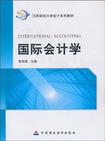国际会计学
出版时间:2010-7 出版社:中国财政经济出版社一 作者:宋京津 编 页数:201
前言
人类进入了21世纪,世界经济日益走向全球化,我国加入了世界贸易组织(WTO),我国社会主义经济建设更加快速发展,举世瞩目。在新世纪、新经济、新环境中,在国际上,为了适应全球贸易经济和全球资本市场发展的需要,1973年创立的国际会计准则委员会(IASC)改组为国际会计准则理事会(IASB),促使全球的会计准则不断走向高质量,进一步提高了企业财务报告的透明度、可比性和充分披露。在国内,我国的会计事业蓬勃发展,2006年2月15日财政部颁布新的《企业会计准则——基本准则》及38项具体会计准则,并切实加强各方面的监管之后,以摧枯拉朽之势,生气蓬勃地向国际准则趋同。我国原任证监会首席会计师张为国博士,也遴选为国际会计准则理事会(IASB)的理事,从而大大提高了我国在国际会计准则理事会中的地位和话语权。历史的发展昭示我们:发达的经济需要发达的会计(或簿记)为其服务,因此,一定时间、一定区域的经济发展,必须带动当时当地的会计的发展。15世纪后期地中海海上贸易的发达,带动了意大利半岛各城邦商业簿记的创新与发展;18~19世纪英国产业革命的兴起,产生了“英国簿记”;两次世界大战得天独厚的美国,其国民经济的发展,推动了现代会计在美国的高速发展。同样的道理,为经济各部门服务的会计的发展也必然驱动并促进会计学术和会计教育的发达。我国在十一届三中全会以来,实施改革开放政策,国民经济各个方面齐头并进,飞速发展。经济越发展,会计越重要。1985年全国人大常委会通过我国第一部《会计法》,1992年我国财政部发布《企业会计准则》(基本准则),随后又发布了若干具体会计准则及征询意见稿,1993年全国人大常委会通过《注册会计师法》,1994年通过《审计法》,2000年国务院公布《企业财务报告条例》,2001年财政部又颁发了新的不分行业的《企业会计制度》,在连续经过多年的准则国际化和“特色化”的研讨之后,终于于2006年2月15日由财政部印发了修订的《企业会计准则——基本准则》和配套的38项具体会计准则,迈上与国际会计准则趋同的轨道。
内容概要
本书为国际会计学英语版,系统全面的介绍了国际会计学相关知识,本书适用于大专院校财经管理专业、科研机构的管理学尤其是会计学和财务管理专业的研究人员、教师、学生使用;同时也适用于跨国企业各类财会管理人员,尤其是财会部门的高级经理以及经营管理部门的高级经理使用;还适用于对国际会计感兴趣的各类人员使用。
书籍目录
Chapter 1 Introduction to International Accounting 1.1 Development of International Accounting 1.2 Definition of International Accounting 1.3 Establishment cf Detailed Contents on International Accounting 1.4 Objectives of Research on International AccountingChapter 2 International Accounting Harmonization 2.1 Overview of International Accounting Harmonization 2.2 International Organizations and Their Activites 2.3 Stock ExchangesChapter 3 Accounting for Foreign Currency 3.1 Introduction 3.2 Foreign Currency Transactions 3.3 Translation of Foreign Financial StatementsChapter 4 Business Combinations 4.1 Definitions 4.2 Legal Forms of Business Combinations 4.3 Reasons for Business Combinations 4.4 Acquisition MethodChapter 5 Consolidated Financial Statements 5.1 Presentation of Consolidated Financial Statements 5.2 Consolidated Statement of Financial Position 5.3 Consolidated Income Statement 5.4 Disclosure RequirementsChapter 6 Accounting for Changing Prices 6.1 Defects of Historical Cost Accounting 6.2 Overview of Accounting for Changing Prices 6.3 Accounting Measurement Alternatives 6.4 Regulation and Practice of Accounting for Changing Prices Chapter 7 Accounting for Financial Instruments 7.1 Background 7.2 Development of Reporting Finaneia] Instruments 7.3 Financial Instrument Practices 7.4 Derivatives Used for HedgingChapter 8 Financial Reporting in Different Countries 8.1 French Accounting 8.2 German Accounting 8.3 Dutch Accounting 8.4 Japanese Accounting 8.5 UK Accounting 8.6 American AccountingChapter 9 Corporate Governance 9.1 History of Corporate Governance 9.2 What Is Corporate Governanee 9.3 Corporate Governance Theory 9.4 Principles of Corporate Governance 9.5 Corporate Governance Models
章节摘录
插图:These authors can be considered as either implicitly or explicitly believing that in-ternational accounting is a subject in its own right.Three publications begin by referring to three approaches to international accountingdefined by T. R. Weirich, C. G. Avery and H. R. Anderson: (1) a universal sys-tem, (2) a comparative system, and (3) accounting for subsidiaries.In addition, several authors give their own definitions, which are worth quotinghere. According to F. Choi and G. Mueller ( 1992, p. 12), international accountingextends general-purpose, nationally oriented accounting in its broadest sense to : ( 1 ) in-ternational comparative analysis; (2) accounting measurement and reporting issues u-nique to multinational enterprises; (3) accounting needs of international financial mar-kets; and (4) harmonization of worldwide accounting and financial reporting diversityvia political, organizational, professional, and standard-setting activities.For A. Belkaoui (1994, p. 12), these new environmental factors of (1) the glob-al economy, (2) the international monetary system, (3) the multinational corporation,and (4) foreign direct investment, have created an environment in which businesstransactions, their conduct, measurement and disclosure, take new and distinctive formsthat call for a specific accounting subdiscipline. That accounting subdiscipline is inter-national accounting.
后记
国际会计是第二次世界大战以后,随着跨国公司的蓬勃发展,国际贸易的日益频繁和资本投资的日趋国际化而产生并发展起来的,旨在为国际企业的有关利益主体提供对决策有用的信息。但现在国际会计的作用已远远超过了这些,成为企业为争夺全球资本市场而按照会计标准编报财务报告以吸引全世界范围内投资者的重要语言。一、写作风格我们主张,在会计准则国际趋同之后,《国际会计学》应以国际会计准则(IASB准则)与美国会计准则(FASB准则)为蓝本。通过对会计准则的深层次学习,不但掌握重要会计术语的基本定义,还要运用准则到案例中解决问题,更要能够对准则中存在的优缺点进行评价。此外,国际会计发展状况、热点问题等也是学生必须了解的内容。本教材正是基于这一宗旨安排自己的内容,文字简练、易学、易懂是本书的最大特色。本书的目标读者是高等院校会计专业高年级本科生和研究生,它同样适合对国际会计问题感兴趣的会计师、财务经理、投资经理和会计教育工作者等群体阅读。二、内容体系本书主要围绕国际会计的发展进程、国际会计的实务处理、各国会计的特色比较和会计相关问题四个方面进行内容安排。随着国际经济形势的发展,国际会计的实务问题已经不仅仅是外币会计、合并报表、物价变动等三大难题了,而是增加了金融衍生工具、公司治理等与会计相关的全球热点问题。我们深知,一部好的教材的编写是一件要求很高的工作,同时也是一项艰巨的工程,它凝聚着众多编写者的心血和经验积累。真诚希望广大读者不断地对本教材提出好的意见和建议,以使我们在将来再版时能够满足读者朋友更高的要求。
编辑推荐
《国际会计学》:江西财经大学会计系列教材
图书封面
评论、评分、阅读与下载
用户评论 (总计1条)
- 发货后很快就收到了 总之是很满意的
推荐图书
- 中考阅读全解
- 最新Auto CAD 2010建筑设计标准教程
- 3ds max+vray室内效果图高级教程
- Flash CS5从新手到高手
- Excel2010中文版办公专家从入门到精通
- Word\Excel2010中文版办公专家从入门到精通
- 漫画梦工厂
- 田英章毛笔楷书2500字
- 午后薰衣茶-下卷
- 日本蜡烛图教程
- 管教有方
- 每天用一点办公室超实用心理学
- G高中物理必修1(配教科)/阳光课堂
- G高中政治必修1(配人教)/阳光课堂
- G高中地理必修1(配人教)/阳光课堂
- G高中生物必修1(配人教)/阳光课堂
- G高中化学必修1(配人教)/阳光课堂
- G高中英语必修1(配外研)/阳光课堂
- G高中数学必修1(配人教A版)/阳光课堂
- G高中语文选修 中外传记作品选读(配人教)/阳光课堂
- G高中语文必修1(配人教)/阳光课堂
- 情景导学·历史必修(第1册)
- G高中英语必修2(配外研)/阳光课堂
- 应用统计学
- 2010年高考满分作文第一范本
